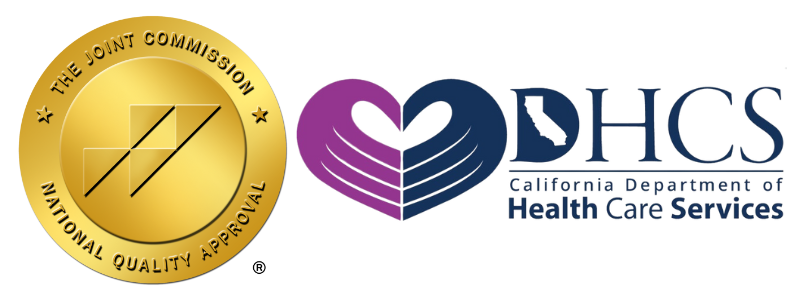The Impact of Super Bowl Ads on Teen and Youth Alcohol Addiction
The Power of Super Bowl Advertising and Its Widespread Reach
The Super Bowl is more than just a sporting event — it’s one of the most-watched television broadcasts in the United States, with over 100 million viewers tuning in each year. This massive audience makes it prime real estate for advertisers, including alcohol brands, looking to capture attention. Super Bowl commercials have become iconic cultural moments, with many viewers just as excited about the ads as they are about the game itself.
Alcohol companies invest millions of dollars per 30-second ad, capitalizing on the event’s ability to create lasting brand impressions. These ads blend humor, celebrity endorsements, and highly relatable social scenarios, often portraying alcohol as a key component of fun, friendship, and celebration. This type of messaging not only reinforces positive perceptions of drinking but also subtly normalizes alcohol consumption, particularly among impressionable audiences such as teens and young adults.
How Alcohol Advertising Shapes Teen Attitudes and Drinking Behaviors
Research consistently shows that advertising significantly influences youth perceptions of alcohol, particularly when alcohol is portrayed as a source of excitement, belonging, and personal success. During major cultural events like the Super Bowl, these messages are magnified, reaching millions of underage viewers who may lack the critical thinking skills to separate advertising fantasy from reality.
The Psychological Influence of Alcohol Ads on Teens
Advertising psychology reveals that repetition, emotional appeals, and aspirational imagery work together to build positive associations with alcohol. Super Bowl ads often depict vibrant parties, social acceptance, and celebration — presenting alcohol not just as a beverage but as a symbol of inclusion and fun.
For teens, whose sense of identity and belonging is still forming, these portrayals can make drinking appear both normal and necessary for social acceptance. This type of exposure contributes to the formation of alcohol-friendly social norms, especially among peer groups.
Themes and Tactics Used in Super Bowl Alcohol Ads
The Glorification of Alcohol in Social Settings
Many alcohol commercials aired during the Super Bowl link alcohol consumption with luxury, success, and social appeal. These ads often feature lavish parties, close-knit friendships, and moments of triumph, sending the message that alcohol enhances experiences and relationships. This can skew youth perceptions, making drinking appear glamorous, desirable, and key to social success.
Humor and Celebrity Endorsements
Alcohol ads frequently leverage humor and celebrity appearances to enhance their appeal. By making drinking seem fun, lighthearted, and even rebellious, these ads reduce the perceived risks associated with alcohol consumption. For teen viewers, humor and celebrity influence make these commercials more relatable and persuasive, ultimately increasing the likelihood that they’ll internalize positive attitudes toward drinking.
Visual Cues and Emotional Triggers
Super Bowl ads excel at visual storytelling. Vibrant imagery, upbeat music, and group-centered scenes create an environment where alcohol becomes synonymous with bonding, adventure, and carefree fun. This subtle messaging primes youth to view alcohol as a gateway to excitement and connection — even before they’re legally old enough to drink.
The Long-Term Impact of Super Bowl Alcohol Ads on Youth Drinking Habits
Reinforcing Negative Social Norms Around Drinking
When alcohol is repeatedly shown as a central part of celebrations, teens can begin to internalize harmful beliefs — that drinking is expected at social gatherings, or that alcohol equals fun and belonging. These internalized social norms increase the risk of underage drinking, binge drinking, and alcohol misuse in adolescence and beyond.
Research Linking Alcohol Ads to Teen Drinking
Multiple studies have documented the correlation between alcohol advertising exposure and teen drinking behaviors. Research from the National Institute on Alcohol Abuse and Alcoholism found that teens exposed to alcohol ads are significantly more likely to begin drinking or increase their consumption compared to peers who are not exposed.
A Journal of Studies on Alcohol and Drugs analysis found a notable spike in youth alcohol consumption immediately following the Super Bowl, especially among teens who were exposed to alcohol ads featuring celebrities and humor-based messaging.
Ethical Concerns: Targeting Youth in Alcohol Advertising
Despite public statements that alcohol ads target legal-age consumers, many marketing strategies appeal directly to younger audiences. Vivid visuals, pop culture references, catchy slogans, and celebrity cameos all enhance the youth appeal of these campaigns, raising serious ethical questions.
Inadequate Regulations and Industry Loopholes
Current advertising guidelines place some restrictions on alcohol marketing, but enforcement is often inconsistent. Alcohol companies routinely push the boundaries, using creative messaging and digital platforms where youth engagement is high. The result is a flood of alcohol content reaching underage audiences, especially during major televised events like the Super Bowl.
How Parents and Guardians Can Counteract Alcohol Messaging
Fostering Open Conversations
Parents can help teens develop healthy attitudes toward alcohol by initiating open, non-judgmental conversations about how alcohol is portrayed in advertising. Encouraging teens to question the glamorized messaging helps them become more critical consumers of media.
Teaching Media Literacy
Educating teens about advertising strategies — including the use of humor, emotional appeals, and peer influence imagery — helps them recognize that these ads are designed to sell, not to inform. When teens understand the manipulative techniques at play, they’re more likely to view alcohol ads with skepticism.
Promoting Positive Role Models and Healthy Lifestyles
Positive messaging can counterbalance the glamorization of alcohol in Super Bowl ads. Highlighting sober influencers, athletes, and musicians who embrace alcohol-free lifestyles shows teens that fun, success, and social connection don’t require drinking.
Encouraging Brands to Promote Healthy Alternatives
Brands can play a proactive role by creating campaigns that celebrate healthy choices, whether promoting non-alcoholic beverages or highlighting fitness, creativity, and personal achievement. These alternative advertising strategies create positive narratives that teens can relate to without normalizing alcohol consumption.
Conclusion: Calling for Responsible Advertising and Greater Awareness
The influence of Super Bowl alcohol advertising on youth is well-documented, and the risks are too significant to ignore. By promoting responsible advertising practices, encouraging media literacy, and fostering open conversations at home, we can help counteract the glamorization of alcohol and protect the next generation from unnecessary harm.
At Mission Recovery Home, we are committed to supporting individuals and families impacted by alcohol addiction, offering personalized treatment programs and educational resources to help build healthier futures. If you or a loved one is struggling with alcohol use, we’re here to help.








